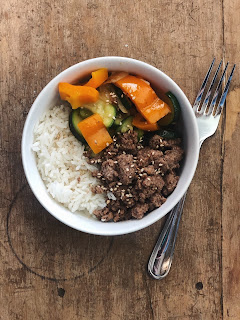
I love when people reach out with nutrition questions. So consider this your free pass to bombard me with questions until I say otherwise. Most recently, I had someone reach out to me about what bread to buy at the store. To be honest what I was first excited about was hearing that she was buying bread. Thanks to trendy diets such as Paleo, Keto, Atkins, etc, the first thing that gets axed from the grocery list when beginning to eat healthy is bread. What did bread ever do to be ostracized in such a way?! This is not to say that you won't lose weight by going on a low carb diet but I digress..
Grains are a very important part of the diet and by USDA Dietary Guideline recommendations should make up 1/4 of your plate at each meal. Bread is a great way to get your daily grain quota but similar to our yogurt discussion it is very challenging to know what bread is what and which bread is best.
The advice that I gave to my friend is go for
Whole Grain bread. The tricky part is that wheat bread is not always whole grain. To make sure you are buying true whole grain bread you must look at the ingredient list which will be listed next to or under the nutrition facts label. You should see "whole grain flour", "whole grain wheat", or simply the words "whole grain". That is how you know if the bread is whole grain or not.
When something says it is a whole grain, that means the entire kernel is being used. That means that the endosperm, the germ, and the bran (the whole wheat trifecta if you will) is ground for maximum nutrition. Whole grains not only provide vitamins but they provide complex carbohydrates and fiber. The complex carbohydrates are large molecules that take time for our body to digest allowing for a steady release of energy throughout the day. This is why many athletes will choose pasta suppers the night before a big game or race. The fiber found in whole grains feeds bacteria in a large intestine and keeps us fuller longer!
If a slice is not your bread and butter, try other sources of whole grains such as: brown rice, popcorn, oatmeal, whole wheat crackers or pasta, wild rice, or whole wheat cereal.



Comments
Post a Comment